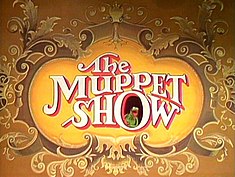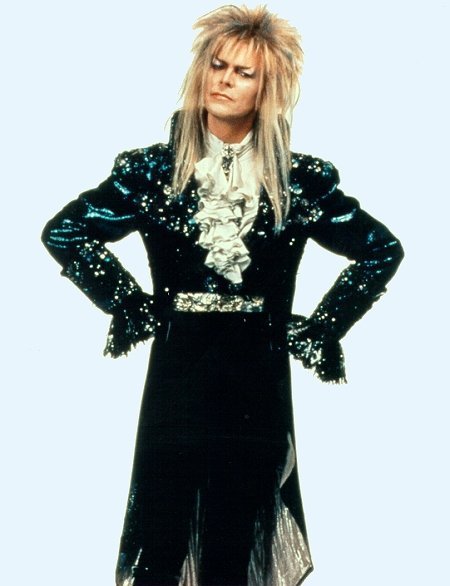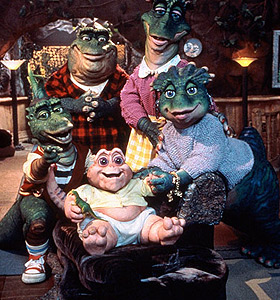Henson was born on September 24, 1936 in Greenville, Mississippi, and died May 16, 1990 of a streptococcal infection that led to organ failure.
He attended the University of Maryland at College Park, which is where he created Sam & Friends as a freshman. If you're a great trivia buff (or a huge fan of Jim Henson) you probably recall that Sam & Friends is where Kermit originated.
 |
| That's him on the right. |
Henson worked on dozens of projects before finding his enormous success with the Muppets, but I really just can't list them all. I will mention one in particular, though, because it became the book we are reviewing this Friday. A Tale of Sand was intended to be a full-length screenplay for a live-action feature-length film, written with Jerry Juhl. The screenplay was never produced, and sat in the vault at the Jim Henson Company until Ramon Perez turned it into a graphic novel this year.
In 1969, Henson joined the wonderful world of Sesame Street. He played Ernie, Guy Smiley, and Kermit, who gained the frill around his neck (which also served to hide the joint where the neck and body connected). He worked on the show in as many ways as they included elements: puppetry, traditional animation, stop-motion animation, and computer animation.
Concerned about being pigeon-holed as a children's entertainer, Henson worked with Saturday Night Live to create some puppet-based sketches for adults. The writers on the show had difficulty grasping the idea of writing for puppets instead of people; one went so far as to say, "I won't write for felt." It was a valiant effort, but it was ultimately a bit of a flop.
After that, he tried to work the Muppets into a Broadway show, which he abandoned when his concurrent project - The Muppet Show - was approved by a British team (and then became syndicated worldwide). In addition to his Sesame Street roles of Kermit and Guy Smiley, Henson also performed as Rowlf, Dr. Teeth, the Swedish Chef, Waldorf, and Link Hogthrob on The Muppet Show.

Due to the great success of The Muppet Show, Henson could translate the Muppets to the big screen. The Muppet Movie was released in 1979 and was a huge hit; it made $65.2 million domestically, and at the time, it was the 61st highest-grossing film ever made. The Great Muppet Caper followed in 1981. This was when Henson decided to end the show and concentrate on films (but, as we all know, the Muppets continued to appear in made-for-TV movies or TV specials).
He played a large part in the creation of Yoda for the Star Wars series. He also suggested that Frank Oz should be the puppeteer and voice of the character, the result of which George Lucas was so thrilled with, he - unsuccessfully - tried to get Frank Oz a Best Supporting Actor Academy Award nomination.
In 1982, Henson founded the aforementioned Jim Henson Foundation to promote the art of puppetry. This was the same year he created The Dark Crystal, which is an excellent example of his new tendency toward darker, less fantastical themes. This tendency carried over into Labyrinth (1986) which you all remember as this movie:

Henson was really distraught by Labyrinth's general failure (and did not live to see the huge cult following it has today). That was the same year Henson and his wife separated, though they remained close for the rest of his life. She cited the biggest reason for the separation as his inability to spend time with the kids, due to his deep involvement in his work.
He continued to create whimsical children's classics like Fraggle Rock and Muppet Babies while at the same time working on darker creations like 1988's The Storyteller (which won an Emmy for Outstanding Children's Program).
In 1989, he began the negotiations to sell his company to Disney so that he could focus more on the creative side of the work. By the next year, he had a TV special with the Muppets visiting Disney World, plus the 3D attraction Jim Henson's Muppet Vision 3D (which, I will admit, made me cry when I saw it at eight years old, because it was big and loud and flying at my face... I maintain that it was a reasonable reaction).
If you remember the show Dinosaurs, you probably wouldn't be surprised to hear that Jim Henson was heavily involved in its creation as well. He thought up the idea long before it became a reality, but until The Simpsons found great success in primetime television, it sounded like a crazy idea.

I will gloss over the details of his death, because they are sad and unfortunate. Suffice it to say that he contracted a streptococcal infection that presented persistent flu-like symptoms and eventually caused organ failure.
There was a beautiful memorial service where - per Henson's wishes - nobody wore black, and several people involved in Henson's many projects sang songs.
His company has gone on to work on dozens more projects since his death, including several creatures for Farscape, Hitchhiker's Guide to the Galaxy, and Mirrormask. Henson's heirs sold the rights to Sesame Street and Bear in the Big Blue House to Disney in 2004. By doing so, they lost the rights to use Kermit the Frog, who couldn't appear in any new Sesame Street material.
As you can see, Henson made an immeasurable impact on the world of entertainment in several mediums for different audiences over a shorter than we would have liked period of time.
 |
| YAAAAAAAAAAAY! |
Perhaps the best blog post EVER. I LOVE Jim Henson and all things Muppets. The Smithsonian had a Muppet exhibit two years ago (don't know if its still there) that had the fist collard Kermit, all the Sam and Friends puppets and a couple of other puppets, as well as original commercials and drawings. He also experimented with different types of film making. He won an Academy award for his short film "Time Piece" which can be found in part on YouTube. Anyway, best post ever!
ReplyDeleteSo glad you enjoyed it! I am a big Jim Henson fan and I had forgotten that you were one too (though, now that you mention it, I do remember it.)
DeleteSince he wrote Tale of Sand and he's pretty much the most awesome thing since sliced bread, I thought we should do a bio on him. Miss Alex took up the challenge (and executed it quite wonderfully.)